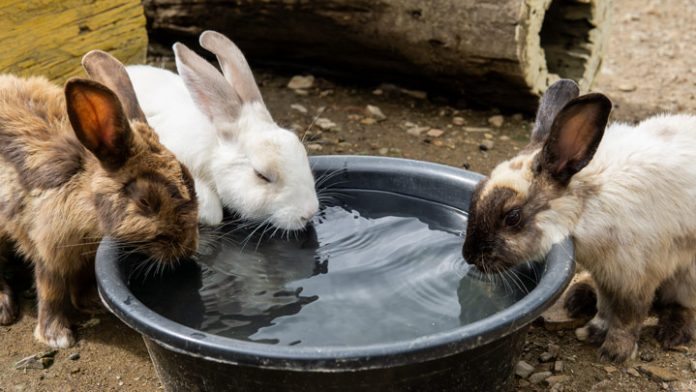HOW TO AVOID HEAT STRESS IN RABBITS
Heat stress in livestock is one of the nightmares a lot of farmers have to pass through, particularly those keeping rabbits in large numbers for commercial purposes.
 Learn More
Learn MoreWith the rising summer temperature. Heat stress on rabbits’ farms, if not managed properly comes with many economic and health issues for your rabbits as well as the farmers.
During the hotter months temperature can soar up to 41 oC even higher which can have a real major impact on your rabbit’s productivity.
If there is no blueprint and a road map in place on how to tackle, prevent, and effectively manage heat stress your rabbits will not simply do well.
The rising temperatures and corresponding heat stress in rabbits may lead to poor performance and the accompanying losses.
It is therefore very important you take extra caution in the summer as rabbits cannot tolerate heat well. Extremely hot weather poses a major risk to the productivity of rabbit farms.
Here are a few precautions to observe in order to help your rabbits overcome this challenging period.
Rabbits tolerate and love the cooler months and they do in temperate climates. They can better withstand extreme cold than extreme heat.
Rabbits kept in hot tropical climates if not properly managed will lead to poor productivity and death. Due to their sensitivity to high temperatures.
Combating heat stress in rabbits
A rabbits relaxing in the afternoon. Rabbits hutch should be built with maximum ventilation.
HEAT STRESS IN RABBITS AND THEIR RESPONSE AND SENSITIVITY
Rabbits are more stable and comfortable during the cooler months. As temperatures rise, their feed intake reduces and they produce more heat; there comes a certain point when rabbits cannot manage the regulation of their body temperature. Temperatures that are above 30 ° C for several days in a row are a major threat to rabbits’ health.
The rabbit only has a few sweat glands; it is therefore not easy for this animal to maintain its body temperature at an appropriate level (between 37 and 39.5 ° C). This feature leaves a rabbit almost no way to perspire. However, these animals have other ways to cope with heat:
Ears: all parts of the rabbit’s body are able to produce heat, yet the substantial network of blood vessels that fills the part around the ears is where the higher thermic exchanges occur. When the animal is too hot, it is able to cool the blood down from heat transfer with the cool air around the ear.
heat stress in rabbits
In combating heat stress in rabbits, When the animal is too hot, it is able to cool the blood down from heat transfer with the cool air around the ear.
Breathing: 80% of the heat produced by rabbits comes from the evaporation of water through breathing. The quicker its breathing pace, the more heat the rabbit is able to produce.
Behavior: when the weather is hot, rabbits often lie down or stretch out on their back. This position allows them to maximize thermic exchanges between their skin surface and the ambient air.
Rabbits just like all farm animals are affected by extreme temperatures, some of the visible impacts of extreme temperatures on rabbis include:
Drop-in feed intake heat stress
Poor weight gain as a result of poor feed utilization.
The decline in production (fertility)
High Mortality
HOW TO AVOID HEAT STRESS IN RABBITS, AND PRESERVE THE HEALTH OF YOUR RABBITS
Some of the helpful tips you can employ to effectively manage heat stress during the hotter months of the year:
READ ALSO: Factors That Influence Rabbit Mating Success
Usually early in the morning used to be cooler than the rest of the day. So it is advisable to feed your rabbits in the early hours of the day.
Rabbit hutch should be placed under a good shade
Their hutch should never face the sunrays (direct sunlight)
The rabbit hutch should be as free as possible, try and reduce the number of wood chips and hair content in the nests.
READ ALSO: WHAT TO FEED AND NOT TO FEED RABBIT
It should be constructed such that it has maximum ventilation using nets.
Preferably feed rabbits in the evening. This rule also applies to fattening rabbits and kits in controlled nursing. The goal is to allow them to digest feed at night when the temperature is cooler;
In combating heat stress in rabbits avoid overcrowding, reduce the number of rabbits in each pen during fattening.
The pipes should be drained to prevent algae growth and blockage of the pipes
Your rabbit’s water should be changed every day to keep it fresh
Good multivitamins with electrolytes should be included in their water occasionally to help reduce heat stress in rabbits.
Enough hay and roughages should be provided to aid proper digestion, especially at night.














